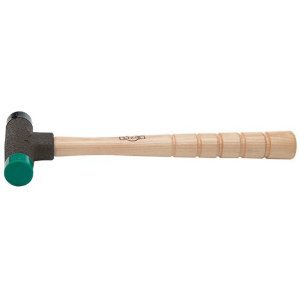Good topic here !
I see alot of different opinions with hammers. I dont use anything special, I have a brass faced hammer that I use once in a while, but seem to constantly reach for the plastic faced hammer all the time. The hammers I buy, are the really cheap ones. When the plastic ends get mashed up, I just replace the entire hammer.
Bob
Good infro about the wheel weights, I never knew they had changed them. This brings up a question for you. Those lead hammers Used to be available every where, yrs ago. But seemed to dissappear from the shelfs of hardware stores and such. Have they been removed from the shelfs of the general public for health reasons? I had one yrs ago, and it was a good hammer, never marked the object you where strikeing with it. I was just wondering if the lead is that bad for the user, it should be avioded these days?
As to brass or copper? I just wonder if making up your own aluminum ends wouldnt be just as good? The plastic hammers I get, have plastic on one side, rubber on the other. They do unscrew, so I think Ill spin up a aluminum end , and replace the rubber end,just to see if it is durable enough, and performs well.
Thanks for the infro guys


